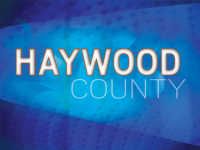The Naturalist's Corner
A decade of Birding for the Arts
This past Saturday morning (May 2) more than 20 arts patrons and bird fanciers gathered at 8 a.m. under ominous skies at the Haywood Arts Regional Theatre for the 10th annual (time sure passes when you’re having fun) Birding for the Arts fundraiser.
We began, as usual, at the theatre and were rewarded immediately with all three of the area’s mimics — gray catbird, mockingbird and brown thrasher.
Many other common birds, residents like blue jay, common grackle, European starling, northern cardinal, American goldfinch and American robin along with migrants such as northern rough-wing swallow, barn swallow and chimney swift were also noted at the theatre.
Those aforementioned skies began to leak a little as we spied on the green heron rookery at Lake Junaluska. The lake is always a great place to compare and contrast our common swifts and swallows. We saw purple martin, tree swallow, northern rough-wing swallow, barn swallow and chimney swift all side by side. Wetland specialties at the lake included double-crested cormorant, pied-billed grebe and spotted sandpiper. It was a little slower than usual at Junaluska for migrant passerines, but we did manage to find a Cape May warbler and a yellow-rumped warbler.
The next stop was the Waynesville Overlook on the Blue Ridge Parkway. This is always a productive stop for the Birding for the Arts tour. The dwarf larkspur and other wildflowers here always compete with the birds for our attention. But we came for birds and we weren’t disappointed. Warblers seen and/or heard at the overlook included black-throated blue, black-throated green, American redstart, ovenbird, black-and-white warbler, blackburnian, worm-eating warbler and chestnut-sided. Other Neotropical migrants included indigo bunting, rose-breasted grosbeak, scarlet tanager, veery, blue-headed vireo and red-eyed vireo.
Related Items
There were numerous grosbeaks at the overlook, all vying like American Idol contestants to be chosen virtuoso. As we were watching one contestant strut his stuff from the top of a not-yet leafed out tree, a different species began to clamor for stage time.
“Fire, fire! Where, where? Here, here, quick put it out!” called an indigo bunting. We located the bunting and a large number of the group was focused on it when we had one of those “birding moments.” A male scarlet tanager suddenly flew into the field of view and perched, it’s scarlet body and jet-black wings contrasting with the bright indigo of the bunting.
Rain began to fall as we left the Waynesville Overlook, headed for Licklog. When we arrived at Licklog Overlook, we were socked in and the rain was steady. Our gracious hosts Sen. Joe Sam and Dr. Kate Queen offered their porch in Waynesville for a dry lunch catered by the Patio.
After the delicious lunch, checklists were passed out and we tallied the morning’s species. Most of the group was surprised to find out, that even through the rain and fog we had recorded 61 species — a reminder of the amazing biological diversity here in our mountains.
The rain and gray had set in for the day. Those of the group with good sense finally dry and with bellies full called it a wonderful trip and packed it in.
That left only the bird-brained — the senator, Kate and myself — to head back into the gray. We got to bird only in snippets in the fog between raindrops but we added a dozen species to the list. Our best stop, species wise, may have been the last one at Polls Gap on Heintooga Road. We probably couldn’t see more than 300 feet but managed to add golden-crowned kinglet, red-breasted nuthatch and yellow-bellied sapsucker to the list.
Because of the limitation on number of participants (due to logistics, birding groups need to be compact), Birding for the Arts is probably not one of the Arts Council’s major fundraisers. But it certainly is one of the most enjoyable. Plan to join us next spring!
Don Hendershot can be reached at This email address is being protected from spambots. You need JavaScript enabled to view it.









